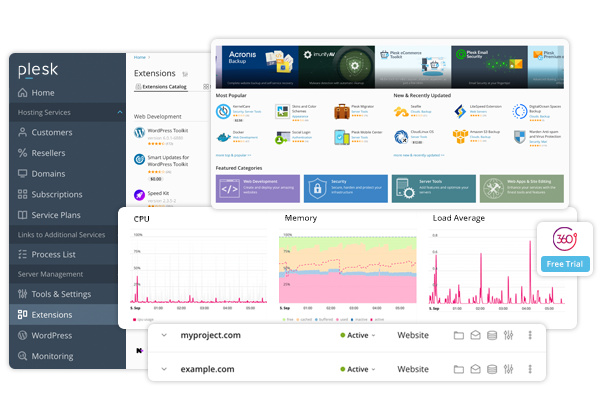Plesk Panel is a comprehensive web hosting control panel that offers various tools and features to manage websites efficiently. Among its many functionalities, one of the crucial aspects is the ability to monitor and analyze website traffic statistics. Understanding traffic statistics and analysis in Plesk Panel is essential for website owners and administrators to make informed decisions about their online presence. In this article, we will delve into the details of how to access, interpret, and utilize traffic statistics and analysis tools provided by Plesk Panel.
Accessing Traffic Statistics:
Accessing traffic statistics in Plesk Panel is straightforward. Follow these steps:
- Log in to your Plesk Panel account.
- Navigate to the “Statistics” section, usually located under the “Websites & Domains” tab.
Types of Traffic Statistics: Plesk Panel provides various types of traffic statistics, including:
- Visitor Statistics: This includes information about the number of visitors, unique visitors, page views, and session durations.
- Bandwidth Usage: This shows the amount of data transferred to and from your website.
- Referrers: Referrers statistics indicate the sources from which visitors accessed your website, such as search engines, social media platforms, or other websites.
- Search Keywords: This section displays the keywords or phrases users entered into search engines before landing on your website.
- Error Logs: Error logs provide insights into any issues encountered by visitors while accessing your website, such as broken links or missing pages.
Interpreting Traffic Statistics:
Understanding traffic statistics involves analyzing the data to gain insights into your website’s performance. Here are some key aspects to consider:

- Visitor Trends: Monitor fluctuations in visitor numbers over time to identify patterns and trends.
- Popular Pages: Identify which pages receive the most traffic and optimize them for better performance.
- Referral Sources: Determine which sources drive the most traffic to your website and focus on maximizing those channels.
- Search Engine Performance: Analyze the effectiveness of your SEO strategies by reviewing search keywords and referral traffic from search engines.
- Bandwidth Usage: Keep track of your bandwidth usage to ensure your hosting plan meets your needs and consider upgrading if necessary.
Utilizing Traffic Analysis Tools:
Plesk Panel offers several tools to further analyze website traffic:
- AWStats: AWStats is a powerful log analyzer that provides detailed graphical and statistical information about website visitors, including browsers, operating systems, and geographical locations.
- Webalizer: Webalizer generates detailed, easy-to-read reports on website usage, including hourly, daily, and monthly statistics.
- Google Analytics Integration: You can integrate Google Analytics with your website through Plesk Panel to access advanced tracking and analysis features offered by Google’s powerful analytics platform.
Conclusion: Understanding traffic statistics and analysis in Plesk Panel is essential for optimizing website performance and maximizing online presence. By regularly monitoring and analyzing traffic data, website owners and administrators can make informed decisions to improve user experience, increase traffic, and achieve their online goals. With the variety of tools and features provided by Plesk Panel, managing website traffic has never been easier.
Share this article


